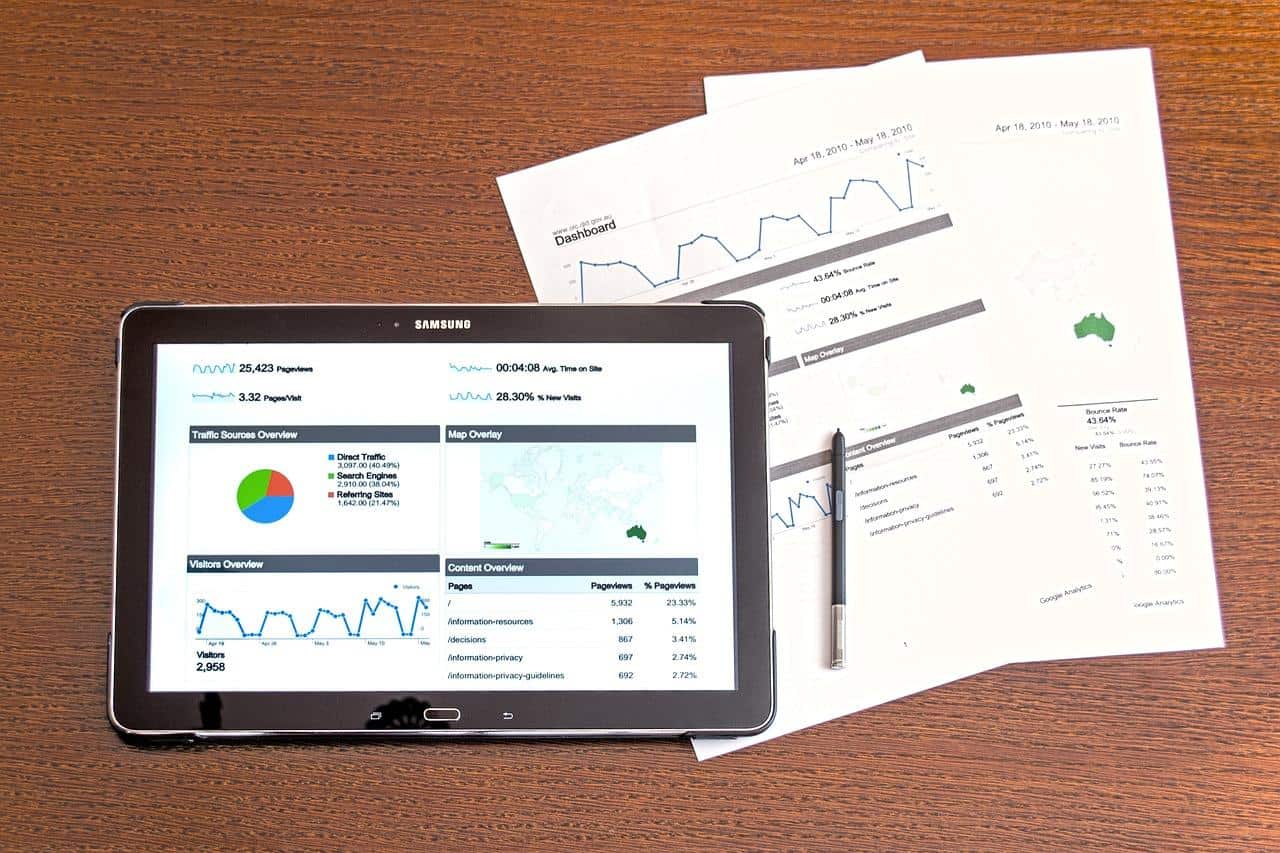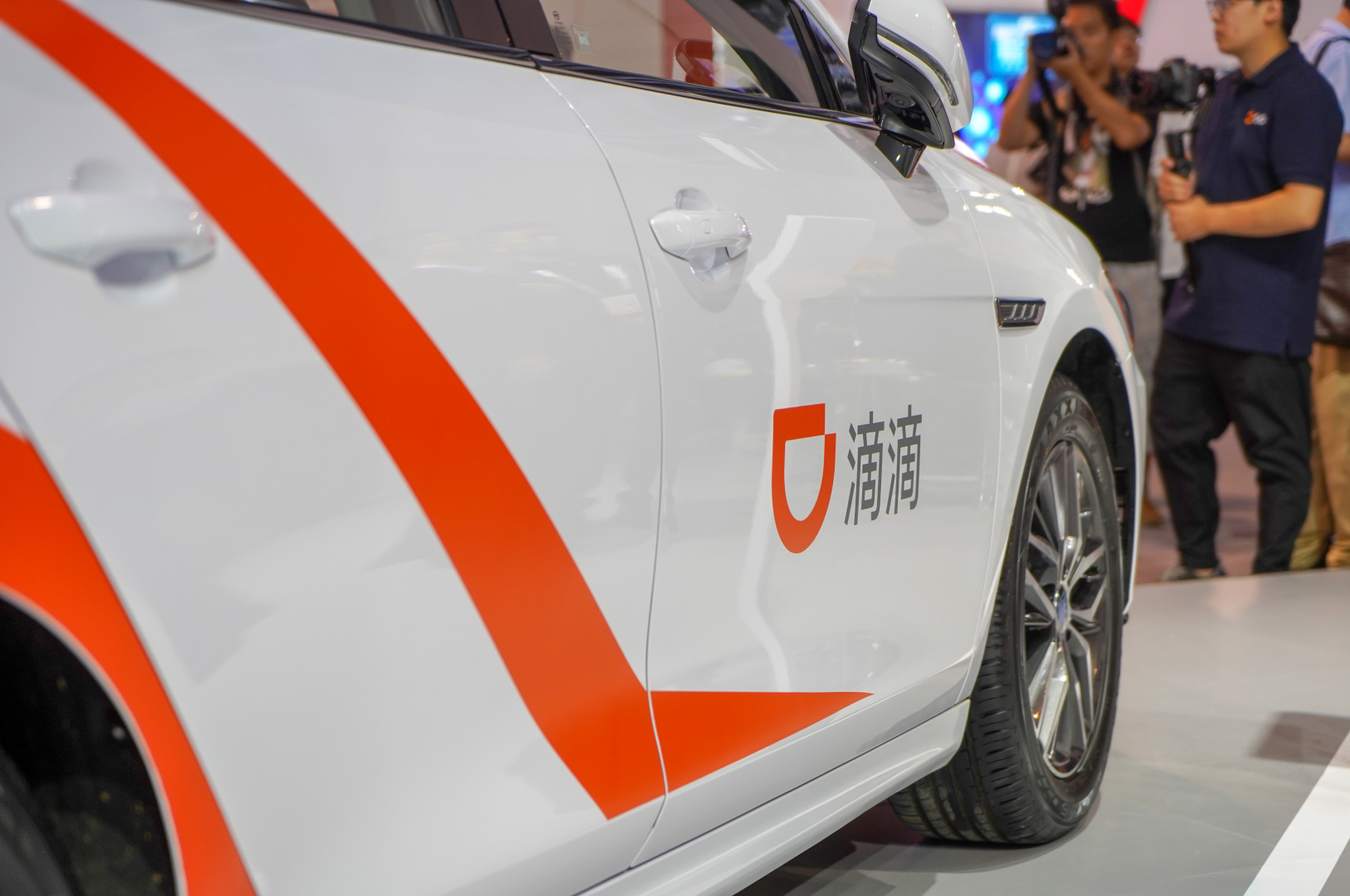The use of social media is only becoming more ubiquitous, with a recent report by Smart Insights revealing social media usage to be at an all-time high of 5.07 billion people.
5.07 billion folks, just so you know, means that 62.6% of the world’s population is on social media, with Facebook leading the line in terms of fame. No wonder social media has become a very potent tool in digital marketing!
But then, social media usage isn’t the only element to have grown in the digital realm. The global valuation of predictive analytics has also increased over the years.
That’s right, and MarketsandMarkets projects a staggering $28.1 billion by 2026, growing with an impressive compound annual growth rate (CAGR) of 21.7% from 2021’s $10.5 billion.
Source
This article explores how the strategic deployment of predictive analytics in social media campaigns can revolutionize your digital marketing efforts in this competitive digital era. We begin by examining the fundamentals of predictive analytics, its significance in social media marketing, and so much more. We’ll even explore potential challenges and so much more, so keep following.
What is Predictive Analytics?
Predictive analytics is the use of tools and techniques like data mining, statistics, regression models, decision trees, artificial intelligence, and machine learning to project the future.
Data scientists use these tools and techniques to develop predictive models, and their choice of what tool or technique to use hugely depends on the problem to be solved and the nature of the dataset.
Speaking from a social media perspective, predictive analysis involves using historical data, advanced algorithms, and machine-learning techniques to forecast future trends, audience behaviors, and social media campaign outcomes like attracting millennials for instance.
Predictive analytics remains crucial for modern business as it enables entrepreneurs and marketers to move beyond reactive strategies and develop proactive approaches by leveraging insights from past interactions and patterns.
Essentially, one of the use cases of predictive analytics is to provide a way to anticipate what is likely to happen on social media based on what has already occurred, making it a vital tool for planning and executing successful campaigns.
Using it in social media, predictive analytics analyzes vast amounts of data generated by user interactions — such as likes, comments, shares, click-through rates, and video views — to identify patterns and correlations.
These insights are then used to predict future behaviors, such as which content types will drive engagement, when the audience is most likely to interact with posts, or how well a specific campaign will perform.
This analytical approach combines historical data with statistical models and AI technologies to uncover actionable insights, allowing marketers to make data-driven decisions that enhance their strategies.
How Predictive Analytics Works
Predictive analytics is a systematic process that involves several steps, culminating in actionable insights that drive decision-making.
Here’s a step-by-step breakdown of how predictive analytics works:
1. Defining Objectives
Like most processes, using predictive analytics for social media campaigns begins with defining your objectives. At this point, you need to ask yourself, “What exactly do I want to achieve from the process?”
Without a well-articulated goal, it becomes challenging to collect relevant data, choose appropriate models, or interpret results meaningfully.
Plus, with well-defined objectives right from the beginning, it becomes easier to align the entire process with the desired outcomes and to get direction for the subsequent stages.
And as usual, when defining your objectives, ensure they are SMART. That’s to say, they should be Specific, Measurable, Achievable, Relevant, and Time-bound.
- Specific: The goal should, with precision, describe what you expect to achieve. Example: “Identify which social media posts will drive the most engagement among users aged 18-24.
- Measurable: The objective you choose must have measurable outcomes to assess success. Example: “Increase click-through rates (CTR) on ad campaigns by 10% over the next quarter.”
- Achievable: The goal you set must also be realistic, given the available data, tools, and expertise. For instance, you will want to avoid objectives like “Predict all future viral trends” if the dataset is limited.
- Relevant: The objective should align with broader business goals or campaign priorities. Think of something like: “Forecast user churn to improve customer retention in a subscription-based service.”
- Time-Bound: Don’t forget to set a timeline for achieving the goal. For example, you can think of a goal like “Predict customer purchasing behavior for the upcoming holiday season.”
2. Data Collection
Data collection is the second and another critical step in the predictive analytics process. It involves gathering relevant, high-quality data that serves as the foundation for building predictive models. The data can come from various sources, depending on the objective of the analysis.
Some of the most common sources include:
- Social Media Platforms: This includes assessing metrics from Facebook, Instagram, Twitter, LinkedIn, and TikTok (e.g., likes, shares, reactions, comments, impressions, and video views).
- Web Analytics Tools: Platforms like Google Analytics can also provide insights into referral traffic, click-through rates (CTR), and user journeys.
- Customer Databases: This includes things like CRM systems that provide data about user demographics, purchase history, or customer feedback.
- Third-Party Data Providers: For a broader context, getting data from external sources is often an option. It could be on market trends, competitor performance, or demographic benchmarks.
- Surveys and Polls: These sources provide direct feedback from users or target audiences to supplement behavioral data.Data integration tools are essential in unifying these disparate data sources, ensuring that information is consolidated into a cohesive and usable format. These tools automate data harmonization, resolve inconsistencies, and help reduce manual effort.
The accuracy and effectiveness of the predictions largely depend on the quality, quantity, and diversity of the data collected. This step ensures that the analytics process is informed by robust and meaningful information.
3. Data Preprocessing
Once the data has been collected, it is cleaned and restructured. This step comes before the processing and entails everything that pertains to the preparation of the collected data for analysis. It includes activities like removing irrelevant information, ensuring consistency in data entry, handling missing data, and organizing it into a format that algorithms can process.
Data preprocessing directly impacts the success of predictive analytics by ensuring models are built on accurate, reliable, and relevant data. It bridges the gap between raw information and actionable insights, laying the groundwork for robust and trustworthy predictions.
4. Exploratory Data Analysis (EDA)
EDA is performed to understand the structure, trends, and patterns within the preprocessed dataset.
 Source
Source
Key activities involved include:
- Visualizing data through charts and graphs.
- Identifying correlations between variables.
- Detecting outliers or anomalies.
This step provides initial insights and helps in selecting appropriate predictive models.
5. Model Selection
Various predictive models are tested to find the best fit for the defined objective. Common models include:
- Regression Analysis: It helps predict continuous outcomes, like sales or engagement rates.
- Classification Models: For categorizing data, such as identifying high-value customers or predicting whether a post will go viral.
- Time-Series Analysis: It is used to forecast trends over time, such as predicting the best posting times on social media.
- Clustering Algorithms: This model helps segment audiences based on shared behaviors or characteristics.
- Neural Networks: For complex, non-linear relationships in large datasets.
The choice of model depends on the type of data and the prediction goal.
6. Training and Testing
Once a model is selected, it must be trained using historical data. The process involves splitting the data set into training data and testing data. The former is used to build the model, while the latter helps assess the accuracy of the developed model. Once testing is done, the model is trained to recognize patterns and relationships within the data.
7. Prediction
After training, the model is applied to new data to generate predictions. That could include future sales based on past performance, audience engagement for upcoming social media posts, customer churn based on usage patterns, and other predictions.
8. Validation and Optimization
The accuracy of the predictions is then assessed to determine essential aspects like accuracy, precision and recall, and root mean squared error.
- Accuracy: This shows the percentage of correct predictions.
- Precision and Recall: This refers to the effectiveness of identifying specific outcomes.
- Root Mean Squared Error (RMSE): How close predicted values are to actual values.
If performance is suboptimal, the model is finetuned by adjusting its parameters, adding or removing features, or using an alternative algorithm.
9. Deployment and Action
Once validated, the predictive model is deployed into real-world scenarios. For social media campaigns, this might involve:
- Automating content scheduling based on predicted engagement times.
- Refining targeting criteria for ads based on audience behavior predictions.
- Creating personalized recommendations for individual users.
The predictions are integrated into decision-making processes, enabling smarter, data-driven strategies — and that’s how predictive analytics work!
The Importance of Predictive Analytics in Social Media Marketing
So, why would you need to embrace predictive analytics in your social media marketing campaigns in the first place?
 Source
Source
Well, there are several reasons predictive analytics in your social media campaigns is necessary:
Enhancing Customer Engagement
One of the primary benefits of incorporating predictive analytics into social media marketing campaigns is its ability to personalize user experiences. By analyzing past interactions, predictive analytics allows brands to tailor their content to meet individual preferences, leading to increased engagement.
For instance, an e-commerce company might use predictive models to identify customers likely to abandon their carts.
When that knowledge is available, it becomes easier for the sellers to counter the problem and drive more sales. For instance, the e-commerce website might issue such customers a discount code that encourages them to complete the purchase.
Having such personalized interventions not only boosts customer engagement but also builds long-term loyalty. Actually, studies have revealed that brands offering personalized experiences enjoy 80% higher customer retention rates than those that do not.
Enhancing Targeted Marketing
With predictive analytics, it’s now easy for marketers to pinpoint their target audience with unprecedented precision. By analyzing user data such as browsing habits, past interactions, and demographic information, businesses can forecast which groups are most likely to engage with specific content or products.
For example, a clothing brand might use predictive models to identify young professionals who prefer sustainable fashion, crafting campaigns that directly appeal to this niche audience.
This level of targeting improves the effectiveness of advertising campaigns, ensuring that each message resonates with the intended audience. Plus, with targeted marketing, conversion rates are likely to increase by over 20%, a truly impressive increase.
Optimizing Content Strategy
Predictive analytics provides insights into the types of content that resonate most with specific audiences, as well as the optimal times to post for maximum impact.
Now, timing is one of the essential factors when it comes to social media posts. In fact, did you know that strategically timed posts can garner up to 30% more engagement than randomly scheduled ones? That clearly shows why embracing a strategic content-posting approach on social media is necessary.
Using predictive tools in social media campaigns can reveal when a brand’s followers are most active and what type of content they prefer to interact with. Armed with this knowledge, marketers can focus their resources on producing high-performing content, increasing visibility and engagement.
Supporting Real-Time Decision-Making
Social media trends are dynamic, and staying relevant requires quick, data-driven decisions. Predictive analytics equips marketers with the tools to identify and capitalize on emerging trends as they happen.
 Source
Source
For example, by analyzing trending hashtags or user sentiment, a brand can align its messaging with ongoing conversations, increasing its visibility and relatability.
This real-time responsiveness enhances a brand’s image and strengthens its connection with the audience. For businesses competing in fast-paced industries, this level of agility can be a critical factor in maintaining market leadership.
Increasing Campaign ROI
Maximizing the return on investment (ROI) is a fundamental goal of any social media marketing campaign, and predictive analytics is key to achieving this. By analyzing historical campaign data, marketers can use predictive analytics techniques to determine which strategies deliver the best results and allocate resources accordingly.
For instance, predictive models might reveal that Instagram ads targeting millennial women yield higher engagement and conversions than campaigns on other platforms. That information can allow a marketer to tailor their campaigns in a way that allows the business to maximize that opportunity for growth.
Enhancing Customer Retention
While every business aims to attract more customers, retaining existing ones is even more beneficial. You see, existing clients have a higher customer lifetime value (CLV) than incoming ones, and they are even likely to become business advocates, especially if they’re satisfied with the products or services you’re offering.
Plus, retaining existing customers is often more cost-effective than acquiring new ones. Forbes clearly emphasizes that depending on the industry you’re in, bringing in a new customer can cost five to seven times more than retaining an existing one.
Predictive analytics can provide information about users at risk of disengaging, enabling timely interventions such as re-engagement campaigns or loyalty rewards. That makes it a potent tool for companies to use for their client retention campaigns.
For example, a streaming service might analyze usage patterns to identify subscribers who haven’t watched content in weeks and send them personalized recommendations to reignite interest.
Forecasting Trends
The other benefit of predictive analytics is that it allows businesses to anticipate and adapt to industry trends before they fully emerge. By analyzing engagement patterns and tracking changes in user behavior, brands can identify upcoming shifts in preferences and adjust their strategies accordingly.
I’ll give you an example. Predictive analytics might reveal a growing interest in short-form video content, prompting a brand to focus on platforms like TikTok or Instagram Reels. This proactive approach not only positions the business as an industry leader but also ensures it stays relevant in an ever-changing digital marketing landscape.
Challenges in Implementing Predictive Analytics
As companies use predictive data analytics to improve their social media marketing campaigns and reap other benefits, it’s worth mentioning that implementing it isn’t an all-smooth process.
Using predictive analytics models to forecast has it’s own fair share of challenges arising from technical, organizational, and ethical considerations, often requiring businesses to navigate complex issues to fully leverage its capabilities.
Data Quality and Availability
One of the biggest challenges with predictive analytics is ensuring the quality and completeness of the data used for predictive models. Predictive analytics relies heavily on historical and real-time data, and unfortunately, social media data can be inconsistent, noisy, or incomplete. . To maintain accuracy, businesses can utilize an AI Detector to identify and filter out AI-generated misinformation, ensuring that predictive models are based on credible sources.
Issues such as missing data, irrelevant variables, or unstructured formats (e.g., text or images) can undermine the accuracy of predictions.
For example, analyzing user sentiment from social media posts might be skewed if the dataset includes spam or irrelevant comments. That means businesses must invest in robust data collection and preprocessing methods to mitigate these issues, which can be resource-intensive, and especially for the small and medium enterprises.
Data Privacy and Compliance
The second challenge is how you collect and use data from social media for predictive analytics raises significant privacy concerns.
Regulations such as the General Data Protection Regulation (GDPR) in Europe and the California Consumer Privacy Act (CCPA) in the United States impose strict requirements on how user data is collected, stored, and used.
 Source
Source
These laws can limit the extent of data access and require explicit user consent, adding complexity to predictive analytics initiatives.
Non-compliance can result in reputational damage and hefty fines. For instance, Google was slapped with a heavy fine of €50 million for GDPR violations. Not every violation will lead to such a huge fine, but it clearly shows how detrimental violating these regulations can affect a business.
Rapidly Changing Social Media Trends
Social media is ever-changing, posing yet another challenge for predictive analytics. Trends, user behavior, and platform algorithms are constantly evolving, making it difficult for models trained on historical data to remain relevant.
For instance, a campaign based on insights from outdated trends might fail to resonate with the audience, resulting in poor performance.
Of course, there are ways for businesses to address this. For instance, by frequently updating their models and continuously monitoring emerging trends. But again, while possible, taking these measures can be time-consuming and resource-intensive.
Algorithm Selection and Model Complexity
Choosing the right predictive model is critical but challenging, especially for businesses with limited expertise in data science.
Predictive analytics offers various algorithms ranging from regression and classification to clustering and deep learning. Unfortunately, none of these solves the same problems as the other, and selecting the wrong algorithm can result in inaccurate predictions and poor outcomes.
Additionally, complex models like neural networks often require significant computational resources and expertise to develop and interpret. That might be affordable for large businesses but for small or medium-sized ones, these demands can create barriers to entry.
High Implementation Costs
While essential in promoting the success of social media campaigns, building a predictive analytics framework involves significant upfront investment in technology, tools, and talent. Businesses exploring predictive analytics can benefit from platforms that offer insights into the best software solutions and services to streamline implementation and reduce costs.
This is particularly challenging for startups, where resources are often limited. Many pitch deck consultants now advise startups to include predictive analytics implementation in their initial funding requests, helping founders demonstrate how data-driven decision making will drive growth and ROI to potential investors.
Unfortunately, advanced analytics platforms, cloud computing resources, and skilled data professionals each come at a high cost, which can deter smaller businesses from adopting this technology.
And that’s not all. The ongoing data storage, model maintenance, and update expenses can further strain budgets. For example, it might mean employing a team to continuously refine and optimize models for a large-scale social media campaign, which can quickly become a financial burden for most businesses.
Measuring Success and Iterating Campaigns
Measuring the success of a social media campaign driven by predictive analytics is critical for understanding its effectiveness and identifying areas for improvement. By establishing clear performance metrics, analyzing results, and making data-driven adjustments, businesses can refine their campaigns to achieve even greater success over time.
Establishing Key Performance Indicators (KPIs)
The first step in measuring success is defining clear and relevant key performance indicators (KPIs) that align with the campaign’s objectives. These KPIs can include metrics such as engagement rates, click-through rates (CTR), conversions, cost per acquisition (CPA), or return on ad spend (ROAS).
The metrics to use for assessment will depend on the objective of the campaign. For instance, a brand running a campaign to promote a new product might focus on conversion rates and sales revenue, while another aiming to build brand awareness on social media might prioritize impressions and audience reach.
Analyzing Campaign Performance
Once a campaign is live, continuous monitoring and analysis of performance data are essential. Predictive analytics plays a crucial role in this phase by providing real-time insights into how the campaign is performing relative to expectations.
For instance, if engagement rates are lower than predicted, the model might identify underlying issues such as ineffective targeting, unappealing content, or improper timing when posting.
Identifying Opportunities for Optimization
After analyzing performance data, businesses must identify specific aspects of the campaign that can be improved. Predictive analytics can recommend changes based on the insights gathered.
For example, if the data shows that video content consistently outperforms static images for a particular audience, the next iteration of the campaign might focus on video production more than static images.
Implementing Iterative Improvements
Campaign optimization isn’t a one-time thing. Instead, it’s an ongoing process involving testing and refining strategies based on insights from predictive analytics. This iterative approach, often referred to as A/B testing, allows businesses to experiment with different variables to determine what works best.
Evaluating Long-Term Impact
Success is not only measured in immediate results but also in long-term impact, such as customer loyalty and brand awareness. Predictive analytics helps assess whether campaigns are fostering ongoing engagement and driving sustainable growth.
Final Thoughts About Predictive Analytics for Social Media
Predictive analytics is an advanced form of data analytics whose aim is to predict future outcomes based on historical data and other factors. In the highly competitive business landscape, integrating predictive analytics into social media marketing is no longer optional; it’s essential.
With market data showing its transformative impact on engagement and ROI, businesses must embrace this technology. Despite challenges, the path forward is clear: start small, experiment, and scale as predictive analytics becomes an indispensable tool in achieving marketing success.











